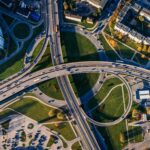AI (or artificial intelligence) has been trending recently for being able to turn music into paintings, humans into cartoons and authoring books. The abilities of AI do not stop there. AI data analysis is being to process enormous amounts of data to form predictions, find patterns and reveal themes, and AI is teaching itself how to do it better.
How data analysis is changing
Traditional data analysis tools require humans to change and manipulate the coding when functions change as well as inputting the data. This is a task is absolute chore even number-obsessed geeks. AI takes the human element out of the equation almost entirely so that brain power can be used for more important innovations. As new data is feed into AI, the data science field uses algorithms that allow the AI to teach itself how to process the data. How far can the self-teaching go? We won’t know that until it’s too late.
But that is okay! AI comes with an almost unimaginable number of benefits. Some tasks that are simplified by AI include processing:
- Substantial amounts of data quickly
- Data from lots of sources
- Data containing many variables
- Thematic themes without human bias
- Multiple data analysis techniques
- Predictions on forecasts
Supervised vs unsupervised learning
There are two different ways machines are taught to analysis data- supervised and unsupervised. Much like some people are auditory, visual, or kinaesthetic learners, different data requires different types of learning.
Supervised learning involves giving AI the labelled inputs and the outputs that allows it to learn overtime. It is like checking the answers in the back of the newspaper after only filling one line of sudoku out, so you don’t have to backtrack. This data trains the computer to classify or predict outcomes accurately. AI tracks the accuracy to increase the success rate.
Unsupervised learning is when AI data analysis groups and interprets the unlabelled input data. That data is most used for three main tasks:
- Clustering: grouping data based on similarities or differences
- Association: using rules to find relationships between variables
- Dimensionality reduction: removing the number of data inputs without damaging the data’s integrity
Unsupervised and supervised learning serve different purposes, but both are help paving the way for the future of data analysis. There is no doubt that the more data we collect, there will be more ways to process it and find meaning in the numbers.





